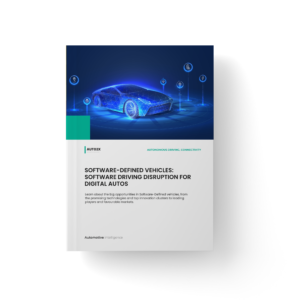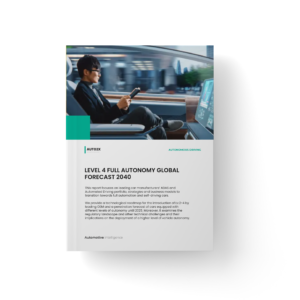Description
Autonomous strategy is key for Volvo’s return to profitability
Volvo’s strategic focus is to return to profitability and achieve financial independence via its architectural, electrified and autonomous strategy.
Volvo is actively testing its Intellisafe technology while also pursuing strategic partnerships to reduce the required investment with the ones with Uber and Autoliv being the most prevalent. More specifically, Volvo created a joint venture with Autoliv called Zenuity to develop ADAS features and autonomous driving software which will be sold to other OEMs. Zenuity will initially employ 200 people, increasing to 600 in the medium term and is expected to start operations in 2017. The first ADAS products are expected to be for sale by 2019 and AD technologies by 2021. Volvo cars will source ADAS&AD tech from this new JV.
In 2017, Volvo had 100 self-driving vehicles operating on public roads within Sweden. Testing is already underway in London. In June 2017, Volvo announced it would use Nvidia’s DRIVE PX2 hardware to put self-driving cars on the road.
Furthermore, in Aug’16, it formed a $300m joint investment with Uber which will see it supplying Uber with autonomous XC90 vehicles for ridesharing based on SPA architecture. The first of those vehicles were production ready in Jun’19. In August 2016, Volvo announced plans to hire 400 high-tech engineers with a focus towards developing autonomous cars. In August 2014, Volvo opened a massive AstaZero test-facility near Gothenberg, which includes a 500 million SEK proving ground that will help develop autonomous driving technology
Volvo to skip Level 3 and introduce L4-unsupervised driving circa 2021
Volvo has announced that it will begin testing a Level 4 autonomous vehicle in 2017. Volvo fears that Level 3 automation is unsafe due to HMI difficulties and will instead pursue Level 4 autonomy (2021), skipping Level 3.
In more detail, April 2017 saw Volvo’s CEO Håkan Samuelsson announcing that the company will skip L3 automated driving as unsafe. In detail, he argues that a L3 system that handovers vehicle control to the driver in case of emergency would be dangerous, especially if the handover time is not adequate for drivers to respond.
We expect Volvo to introduce L4-D in geofenced and clearly designated areas like highways in 2022 and L4-P at the same time. According to the above, Volvo’s L4 will probably offer a retractable steering wheel that will tuck away while in autonomous mode but also allows its owner to drive manually for pleasure.
Table of Contents
Executive Summary
- Volvo’s position in Autonomous, Electric and Shared Mobility
- Key insights from Volvo’s Assessment of Competitiveness
- Volvo’s Strategy Assessment in Mobility
1.1. Financials & Targets
1.2. Ownership and Group Structure
1.3. GEELY GROUP
1.4. Sales Volume and Outlook by 2030
1.5. Global Footprint & Manufacturing Strategy
1.6. Volvo’s Product Strategy
1.7. Architectures
1.8. Collaborations
1.9. Investments in Autonomous and Shared Mobility
1.10. New Mobility Business Models
1.10.1. On-line Sales
1.10.2. Car subscriptions
- Volvo’s Electrification Roadmap & Future Competitiveness
2.1. Vision & Strategy
2.2. Collaborations
2.3. Investments
2.4. Market Positioning
2.5. Technology & Innovation for Powertrain Electrification
2.6. EV Charging
2.7. Benchmarking against the competition
- Volvo in ADAS and Autonomous Driving
3.1. Vision in ADAS, Autonomous Driving and Robotaxis
3.1.1. Partnerships
3.1.2. Investments
3.2. Technology & Innovation
3.3. Market Positioning & Leadership: 2021 vs. 2030
3.3.1. ADAS Fitment in 2021
3.3.2. ADAS Portfolio of Sensors and Features
3.3.3. Roadmap to L4 by 2030
3.3.4. Car sales by Level
3.4. Benchmarking against core competitors in AD
3.4.1. Fitment of ADAS
3.4.2. Roadmap to L4: Leaders vs. Followers
4. Volvo’s plans for Shared Mobility
4.1. Vision in Mobility: “Freedom to Move” & all electric by 2030
4.2. Assessment of Volvo’s Strategy & Mobility Service Portfolio
4.3 Volvo vs. Peers in Mobility Business Models




